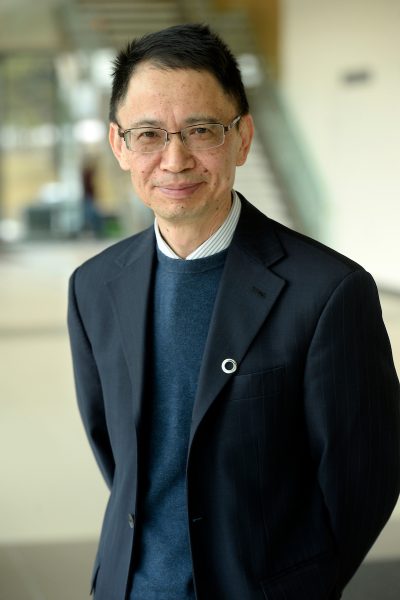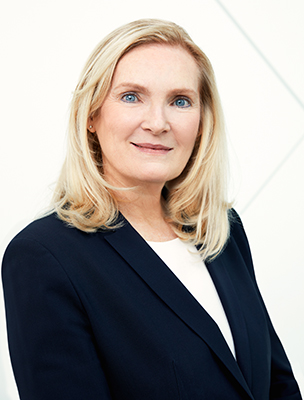Professor Laura Levin, in York University’s School of the Arts, Media, Performance & Design (AMPD), was awarded a Partnership Grant from the Social Sciences and Humanities Research Council of Canada (SSHRC) in May 2020, as principal investigator for the project “Hemispheric Encounters: Developing Transborder Research-Creation Practices.” The term of the funding for the partnership team is seven years and the value is $2,499, 978.

“York University is delighted to learn of the success of Professor Levin’s SSHRC Partnership Grant. This prestigious grant, intended for large teams working in formal collaboration with postsecondary institutions, illustrates York’s leadership and that of the School of the Arts, Media, Performance & Design. It underscores the University’s capacity as a driving force for positive change and its historic strength in analyzing cultures and mobilizing creativity,” said Vice-President Research & Innovation Amir Asif.
“Professor Laura Levin and her collaborators’ work reminds us of how essential performance is to the vitality and well-being of diverse communities across the Americas. This research will enhance critical connections among diverse cultures and communities. As an avid reader of Levin’s past work, I’m excited to see what this new project yields,” said AMPD Dean Sarah Bay-Cheng.
Levin is associate professor of Theatre & Performance Studies at York. She is director of Sensorium: Centre for Digital Arts & Technology and incoming associate dean, Research in AMPD (starting July 1, 2020). She teaches courses on contemporary theatre and performance art, devised theatre and practice-based research. Her research focuses on site-specific, immersive and urban intervention performance; performing gender and sexuality; political performance; intermedial and digital performance; research-creation methods; and performance theory.
Hemispheric performance as a tool for social change
“Hemispheric Encounters: Developing Transborder Research-Creation Practices” is a partnership project that seeks to develop a network of universities, community organizations, artists, and activists across Canada, the United States, and Latin America actively working in and with “hemispheric performance” as a methodology, a pedagogical strategy, and a tool for social change.
“We activate this network for the purpose of sharing strategies and resources, forming transnational alliances, and developing more advanced understandings of human rights concerns affecting multiple sites in the Western hemisphere,” Levin explains.
This project is especially timely in forming transborder coalitions for exchanging hemispheric knowledge ― an action that Levin says could not be more urgent as growing rights emergencies require the coordinated action of activists in the Americas. Among others, these include:
- The dramatic rise in nativism and populism and related spread of anti-immigrant sentiment;
- The growing expulsion of refugee migrants from Central America;
- The displacement of Indigenous communities by mining and pipeline projects; and
- Record-high rates of sexual, racial and gender-based violence
Levin states that the partnership will generate original understandings of embodied practice as a unique method of conducting research on, and ethically tackling, these humanitarian and ecological challenges.
“It seeks to define, explore, and experiment with ‘hemispheric performance practice’ as a distinctive practice-based, decolonial, transborder, and collaborative mode of knowledge production,” she says.
This project, which builds on networks of the Canadian Consortium on Performance and Politics in the Americas and New York University (NYU)’s Hemispheric Institute of Performance and Politics, assembles a group of international co-applicants and collaborators who are leaders in performance, human rights, environmental justice and research-creation.
Academic partners include Concordia University, OCAD, University of Alberta, University of Manitoba, L’Université du Québec à Montréal, University of Toronto, University of Windsor, University of Winnipeg, ITESO-Guadalajara, NYU, The José Simeón Cañas Central American University, La Universidad Nacional Autónoma de México, La Universidad Nacional Autónoma de México, La Universidad Nacional de Colombia, La Universidad Nacional de La Plata (Argentina).
Community partners are artist and activist groups, with long histories of pursuing social justice through performance: Aluna Theatre, FADO Performance Art Centre, grunt gallery, LACAP, Productions Onishka, Western Front, Intervocal, Mapa Teatro, Mirador Colectivo, Radio Nativa, Resistencia Creativa, Sanctuary Neighborhoods, Teatro Azoro, Teatro Ciego, The Yes Men, Voces Mesoamericanas. These organizations bring current, vital experience in working on the real-life impacts of the hemispheric issues that the project is exploring.
Postdoc Fellowships also announced
SSHRC also posted its Postdoctoral Fellowship winners, in May 2020, which included many from York.
“We extend our congratulations to the SSHRC Postdoctoral Fellowship winners. The diversity of these projects, ranging from Canada’s new immigration landscape to gender justice, speaks to York’s strong commitment to shared values and our aspiration to better understand the human condition and the world around us, and to employ the knowledge we gain in the service of society,” said Vice-President Research & Innovation Amir Asif.
For more information on SSHRC Partnership grant information, visit the website. For the Postdoc Fellowships, go here. To learn more about Levin, visit her Faculty Profile page






 To be successful in the first two phases, the current time for diagnosis needs to be maintained and almost 60 per cent of exposed contacts would have to be traced, quarantined and isolated. Although, if some level of social distancing is maintained, that could counter any decrease in quarantining.
To be successful in the first two phases, the current time for diagnosis needs to be maintained and almost 60 per cent of exposed contacts would have to be traced, quarantined and isolated. Although, if some level of social distancing is maintained, that could counter any decrease in quarantining.




















